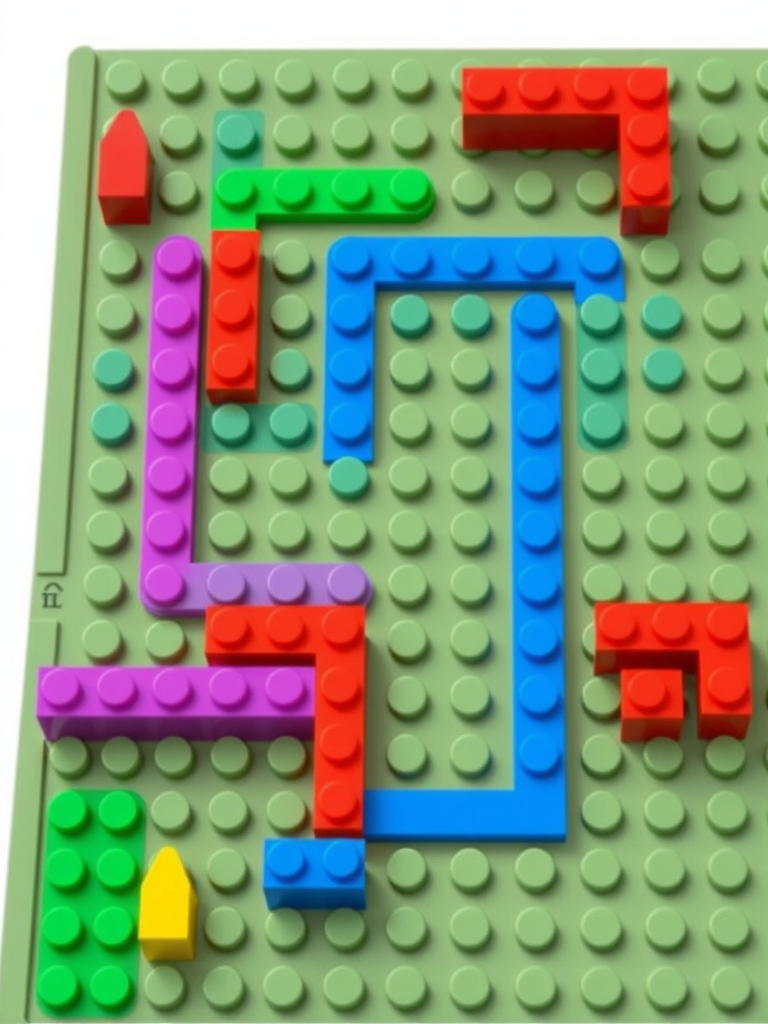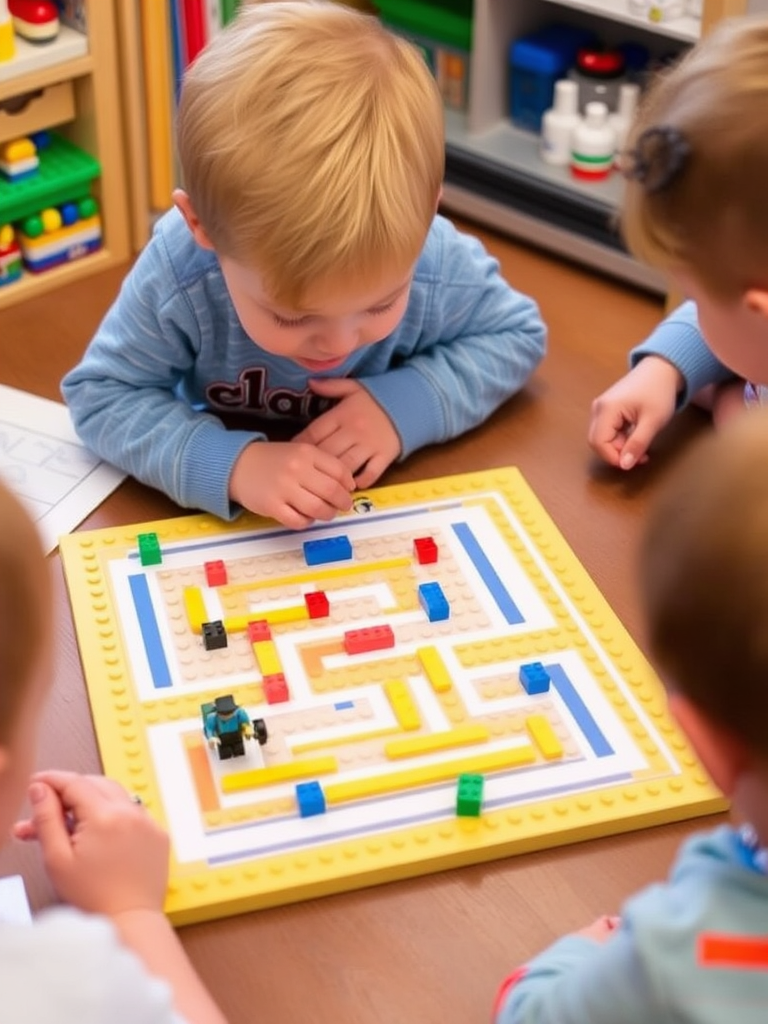
Are you looking for a fun and engaging way to teach STEM skills to your kids or students? The LEGO Maze Coding Activity is the perfect solution! This hands-on project combines creativity and problem-solving, making it an ideal educational tool for children of all ages. In this article, we’ll explore five exciting methods to enhance STEM learning through the LEGO Maze Coding Activity.
Introduction to the LEGO Maze Coding Activity
The LEGO Maze Coding Activity is a creative and interactive way to introduce children to the world of coding and programming. By constructing a maze using LEGO bricks and then navigating a small robot or marble through it, kids can learn the basics of algorithms, sequencing, and debugging. This activity not only fosters critical thinking and problem-solving skills but also encourages teamwork and collaboration.
1. Building the Maze: Creativity Meets Engineering
The first step in the LEGO Maze Coding Activity is to design and build the maze. This process allows children to unleash their creativity while applying engineering principles. Here’s how to get started:
Materials Needed:
- LEGO bricks (various sizes and shapes)
- Baseplate (at least 10×10 inches)
- Small robot or marble
- Optional: Obstacles, tunnels, and bridges to add complexity
Instructions:
- Design the Maze: Sketch a rough layout of the maze on paper. Consider including dead ends, loops, and multiple paths to increase the challenge.
- Build the Walls: Use LEGO bricks to construct the walls of the maze. Ensure that the pathways are wide enough for the robot or marble to pass through.
- Add Obstacles: Incorporate additional challenges, such as tunnels, bridges, or movable barriers, to make the maze more interesting.
Tips:
- Encourage kids to think about the robot’s or marble’s perspective while building the maze.
- Use different colors or patterns to distinguish between paths and dead ends.
2. Coding the Robot: Introduction to Programming
Once the maze is built, the next step is to code the robot to navigate through it. This is where children can learn basic programming concepts.
Materials Needed:
- Programmable robot (e.g., LEGO Mindstorms, Sphero, or a simple line-following robot)
- Coding software (specific to the robot)
Instructions:
- Understand the Robot’s Capabilities: Familiarize yourself with the robot’s sensors and movements.
- Plan the Route: Map out the path the robot needs to take to reach the maze’s end.
- Write the Code: Use the coding software to create a sequence of commands (e.g., move forward, turn left, etc.).
- Debug and Test: Run the code and make adjustments as needed to ensure the robot successfully navigates the maze.
Tips:
- Start with simple commands and gradually increase complexity as kids become more confident.
- Encourage problem-solving by asking questions like, “What happens when the robot encounters a dead end?”
3. Navigating with Algorithms: Understanding Logical Sequences
Algorithms are step-by-step instructions to solve a problem. The LEGO Maze Coding Activity is an excellent way to introduce this concept.
Materials Needed:
- The built maze
- Small robot or marble
- Paper and pencil for planning
Instructions:
- Define the Problem: Clearly state the goal (e.g., navigate from start to finish).
- Plan the Sequence: Write down each step required to solve the maze.
- Test the Algorithm: Follow the sequence to see if it works. If not, revise and try again.
Tips:
- Use terms like “sequence,” “loop,” and “conditional” to describe the algorithm.
- Encourage kids to think of real-world examples of algorithms (e.g., recipes, game rules).
4. Debugging: Learning from Mistakes
Debugging is the process of finding and fixing errors in code. It’s an essential skill in programming and problem-solving.
Materials Needed:
- The built maze
- Programmed robot or marble
- A list of potential issues that may arise
Instructions:
- Run the Program: Execute the code and observe the robot’s behavior.
- Identify Errors: Note where the robot deviates from the intended path.
- Fix the Code: Make necessary adjustments to the code to correct the errors.
- Retest: Run the code again to ensure the errors have been resolved.
Tips:
- Encourage kids to stay patient and persistent when debugging.
- Highlight the importance of testing small changes before making significant alterations.
5. Collaboration and Teamwork: Working Together to Solve Challenges
The LEGO Maze Coding Activity can be a group project, promoting teamwork and communication skills.
Materials Needed:
- The built maze
- Programmed robot or marble
- A team of kids or students
Instructions:
- Assign Roles: Divide the team into builders, coders, testers, and debuggers.
- Collaborate: Encourage each member to contribute ideas and solutions.
- Present Findings: Have the team share their experiences and what they learned.
Tips:
- Rotate roles to give everyone a chance to experience different aspects of the activity.
- Use team-building exercises to foster a collaborative environment.
External Resources:
For additional inspiration and guidance, check out this detailed guide on Coding a LEGO Maze.
Conclusion
The LEGO Maze Coding Activity is a powerful tool for teaching STEM skills in a fun and engaging way. By building mazes, coding robots, and working together, kids develop critical thinking, problem-solving, and collaboration skills. This hands-on approach to learning not only makes STEM concepts accessible but also encourages a lifelong love of learning. So, gather your LEGO bricks and start coding today!
Related Topics:
For more on game design and art, explore our Game Design & Art section.
Make Your First 2D Game in Unity
Want to build your first game but don’t know where to start? This beginner-friendly guide shows you how to create SampleGame2D — a fun Flappy Bird–style project — step by step in Unity. Inside you’ll learn:
Tokyo Back Alleys collection
All assets are optimized for game engines and all major 3D packages. Formats: Blend 3.6+ only, OBJ, FBX, Unreal Project
Articles
- Quick & Easy FRC Game Tools Download for a Smooth 2025 Season
- How to Get Free Xbox Codes 2025 to Unlock More Games
- Streaming vs 8K Gaming: How to Balance Your Setup
- Unity3D Monetization Strategies: Maximize Revenue from Your Game in 2024
- Blender Character Creation: A Gateway to Excelling in Game Development

